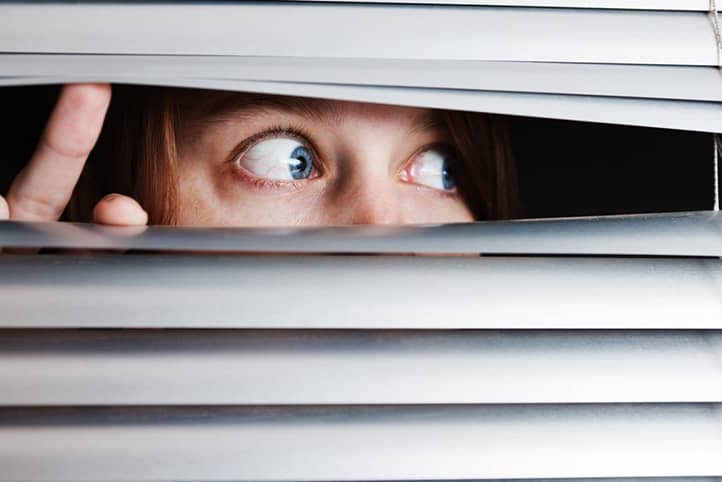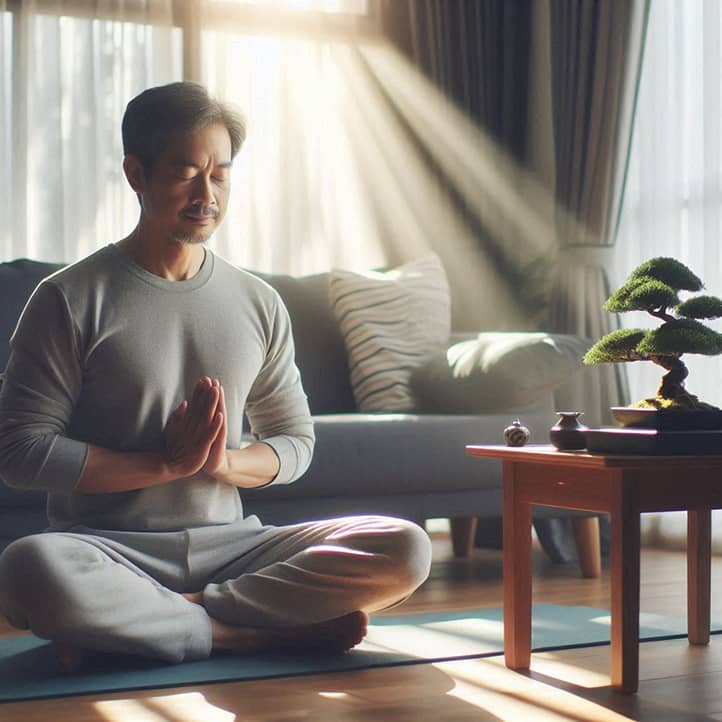Agoraphobia is an anxiety disorder characterized by a fear of situations or places where a person feels helpless or trapped without a means of escape. Contrary to popular belief, agoraphobia is not limited to the fear of open spaces. It can also include a fear of crowds, public transportation, stores, movie theaters, and other public places. This condition can turn everyday activities into a challenge, making a person feel trapped by their own fears.
Interestingly, the term “agoraphobia” derives from the Greek words “agora” (marketplace) and “phobos” (fear). In Ancient Greece, the agora was the center of public life, a place for gatherings and trade. Thus, the etymology of the term reflects the essence of the disorder—a fear of public places and situations.
Recent neurobiological research indicates that people with agoraphobia exhibit changes in amygdala activity—the area of the brain responsible for processing emotions and the “fight or flight” response. This may explain the intensity of physical symptoms experienced during panic attacks associated with agoraphobia.
Agoraphobia can manifest differently in different people. For some, it may be a fear of large open spaces, while for others, it may involve a fear of enclosed spaces or crowds. However, the common factor is the fear of being in a situation where escape seems difficult or impossible.

Main Symptoms and Manifestations of Agoraphobia
Symptoms of agoraphobia can range from mild discomfort to intense panic. Here are some of the most common manifestations:
- Intense fear of certain situations or places.
- Avoidance of frightening situations or places.
- Need for accompaniment when leaving the house.
- Feeling helpless or out of control.
- Physical anxiety symptoms, such as:
- rapid heartbeat;
- sweating;
- trembling;
- shortness of breath;
- nausea or stomach discomfort.
- Fear of fainting or dying in a public place.
- Feeling of unreality (derealization) or detachment from oneself (depersonalization).
It is important to note that symptoms of agoraphobia can worsen over time if left untreated. Often, people with agoraphobia begin to limit their activities, leading to social isolation and a decreased quality of life.

Causes of Agoraphobia
The development of agoraphobia is often compared to the formation of a protective cocoon. Like a caterpillar creates a protective shell for its transformation, a person with agoraphobia forms psychological barriers to protect themselves from perceived threats in the outside world.
Research suggests that epigenetic changes triggered by traumatic experiences, stress, and anxiety may influence the formation of agoraphobia. Attachment theory, developed by John Bowlby, also sheds light on the roots of agoraphobia. According to this theory, disturbances in early relationships with parents or caregivers may lead to the formation of insecure attachment types, which in turn can increase the risk of developing anxiety disorders, including agoraphobia.
The exact causes of agoraphobia are not fully understood, but it is believed to arise from a complex interplay of various factors.
Psychological Factors
- Traumatic experience. Experiencing a panic attack or a traumatic event in a public place can trigger agoraphobia.
- Learned fear. Observing anxious behavior in parents or close ones can lead to fear of certain situations.
- Low self-esteem and lack of confidence. These factors can amplify feelings of helplessness and vulnerability in potentially dangerous situations.
- Stress and accumulated anxiety. Prolonged exposure to stressful factors can increase the likelihood of developing anxiety disorders, including agoraphobia.
Biological Factors
- Genetic predisposition. Studies show that people with close relatives suffering from anxiety disorders are at a higher risk of developing agoraphobia.
- Neurochemical imbalance. Disruptions in neurotransmitters like serotonin and norepinephrine may play a role in the development of agoraphobia.
- Increased vestibular system sensitivity. Some studies indicate a link between balance disorders and agoraphobia.
Social Factors
- Cultural characteristics. In some cultures, where social harmony and conflict avoidance are highly valued, a higher prevalence of agoraphobia may be observed.
- Social isolation. Prolonged absence of social contact may intensify the fear of public places and situations.
- Life changes. Major life events, such as moving, job loss, or divorce, may trigger the onset of agoraphobia in predisposed individuals.
Understanding the multifactorial nature of agoraphobia is important for both prevention and effective treatment of this disorder.

Diagnosis of Agoraphobia
In diagnosing agoraphobia, each symptom and behavioral pattern becomes a key to unlocking the complex puzzle of human psychology. Specialists carefully analyze the patient’s history, fears, and reactions to differentiate agoraphobia from other anxiety disorders.
It is interesting to note that modern neuroimaging methods, such as functional magnetic resonance imaging (fMRI), are beginning to play a role in diagnosing agoraphobia. Research shows characteristic patterns of brain activation in people with agoraphobia when exposed to fear-inducing stimuli, which may become an additional diagnostic tool in the future.
The cultural context also plays an important role in diagnosing agoraphobia. What may be considered normal behavior in one culture could be viewed as a symptom of a disorder in another. Therefore, specialists must take the patient’s cultural background into account when making a diagnosis.
Diagnosing agoraphobia in children presents a unique challenge, as their symptoms often differ from those of adults. Children may express their fear through behavioral problems or somatic complaints, requiring special attention and a tailored approach from specialists.
Diagnostic Criteria
The diagnosis of agoraphobia is based on the criteria presented in the Diagnostic and Statistical Manual of Mental Disorders (DSM-5), developed by the American Psychiatric Association. According to DSM-5, the following criteria must be met to diagnose agoraphobia:
- Marked fear or anxiety in two or more of the following situations:
- using public transportation;
- being in open spaces;
- being in enclosed spaces;
- standing in line or being in a crowd;
- being outside the home alone.
- The person avoids these situations because of fear that escape may be difficult or help may be unavailable in case of panic or other symptoms.
- The situations almost always provoke fear or anxiety.
- The situations are actively avoided, require the presence of a companion, or are endured with intense fear or anxiety.
- The fear or anxiety is out of proportion to the actual danger posed by the situation.
- The symptoms persist for 6 months or longer.
- The symptoms cause clinically significant distress or impairment in social, occupational, or other important areas of functioning.
Assessment Methods
To diagnose agoraphobia, specialists use various assessment methods:
- Clinical interview. A psychiatrist or psychologist conducts a detailed interview with the patient, asking about symptoms, their duration, impact on daily life, and history of the disorder.
- Psychological tests. Standardized questionnaires and scales are used to assess the severity of symptoms and their impact on the patient’s life. Some commonly used tools include:
- the Marks Agoraphobia Scale;
- the Mobility Inventory for Agoraphobia;
- the Beck Anxiety Inventory.
- Medical examination. It is essential to rule out physical causes of symptoms, so a doctor may conduct a general medical exam and laboratory tests.
- Symptom diary. Patients may be asked to keep a diary, recording situations that provoke fear and the intensity of symptoms.
- Functional analysis. The impact of symptoms on various aspects of the patient’s life, including work, relationships, and daily activities, is evaluated.
- Differential diagnosis. It is important to distinguish agoraphobia from other anxiety disorders, such as social phobia or specific phobias.
Accurate diagnosis of agoraphobia requires a comprehensive approach and may take some time. It is important for the patient to be open and honest with the specialist, providing complete information about their symptoms and experiences.

The Impact of Agoraphobia on a Person’s Life
Agoraphobia hinders not only physical movement but also emotional and social well-being, significantly affecting the quality of life.
Studies show that people with agoraphobia often develop unique coping strategies to navigate a world they perceive as threatening. These strategies may include careful route planning, relying on “support people” for companionship, or creating mental “islands of safety” in intimidating places.
Interestingly, agoraphobia can affect perceptions of time and space. Some studies suggest that people with agoraphobia perceive distances as longer and time in stressful situations as slower than it actually is.
Virtual reality and online technologies are opening up new opportunities for people with agoraphobia. On one hand, they provide a safe space for social interaction and work. On the other hand, over-reliance on the virtual world may worsen isolation and make it harder to overcome fears in real life.
Limitations in Daily Life
- Mobility. People with agoraphobia often struggle to move beyond their “safe zone,” which is often limited to their home or immediate surroundings. This can lead to:
- Inability to visit stores, banks, or medical facilities independently;
- Avoidance of public transport;
- Difficulty traveling and vacationing away from home.
- Independence. Dependence on others to complete everyday tasks can significantly reduce self-sufficiency. A person may need companionship even for short trips out of the house.
- Physical Health. Restricted mobility and avoidance of physical activity can lead to health issues such as:
- Obesity;
- Cardiovascular diseases;
- Weakened immune system.
- Leisure and Hobbies. Many types of recreation become inaccessible, which may lead to a loss of interests and decreased quality of life.
Social and Professional Consequences
- Social Isolation. Agoraphobia can lead to a significant reduction in social contacts. A person may:
- Avoid meetings with friends and relatives;
- Refuse to participate in social events;
- Have difficulty maintaining and forming new relationships.
- Professional Activity. Impact on work can be substantial:
- Agoraphobia can lead to job loss or restricted career opportunities;
- Working from home may become the only option, limiting job choices;
- Productivity may decline due to constant stress and anxiety.
- Education. Students with agoraphobia may struggle to attend classes, which can negatively impact their academic performance.
- Family Relationships. Agoraphobia can create strain in family relationships:
- Increased dependency on family members may lead to feelings of guilt and frustration;
- Limitations in family activities can cause conflicts;
- Partners may feel overwhelmed by responsibility.
- Self-Esteem and Identity. Persistent limitations and dependence on others can lead to:
- Lowered self-esteem;
- Feelings of helplessness and loss of control over one’s life;
- Depression and other comorbid mental disorders.
- Financial Consequences. Agoraphobia can significantly impact a person’s financial situation due to:
- Job loss or limited employment opportunities;
- Costs associated with treatment and therapy;
- Need for additional assistance and support.
It is important to note that the degree to which agoraphobia affects a person’s life can vary from moderate to very severe. However, even in severe cases, effective treatments exist that can significantly improve quality of life and reduce the negative impact of symptoms.

Treatment of Agoraphobia
The treatment of agoraphobia can be likened to the rehabilitation process following a physical injury. Just as physical therapy helps restore mobility and muscle strength, psychotherapy and medication help restore psychological flexibility and the ability to cope with stressful situations.
Recent research in the neurobiology of anxiety is opening new prospects for developing more targeted treatments for agoraphobia. For instance, studying the role of neuropeptide Y in regulating anxiety may lead to new medications with fewer side effects.
The integration of virtual and augmented reality technologies into the treatment of agoraphobia represents an exciting research direction. These technologies allow for the creation of controlled environments for exposure therapy that can be tailored to each patient’s individual needs.
The holistic approach to agoraphobia treatment, which takes into account not only the psychological aspects of the disorder but also the patient’s physical health, nutrition, sleep, and social connections, is also becoming increasingly popular.
Psychotherapy
Psychotherapy is the primary treatment for agoraphobia. The most effective approaches include:
- Cognitive Behavioral Therapy (CBT):
- Helps patients identify and change negative thoughts and beliefs associated with their fears.
- Teaches anxiety and panic management skills.
- Includes relaxation techniques and breathing exercises.
- Exposure Therapy:
- Gradual and controlled exposure to frightening situations.
- May be conducted in imagination, virtual reality, or real conditions.
- Helps patients overcome fear through habituation and learning new responses.
- Acceptance and Commitment Therapy (ACT):
- Teaches acceptance of negative thoughts and feelings without trying to change them.
- Focuses on actions aligned with personal values despite the presence of anxiety.
- Psychodynamic Therapy:
- Explores deep-seated causes of anxiety and fears.
- May be useful for patients with a long history of anxiety disorders.
Medication
Medication is often used in conjunction with psychotherapy, especially for severe cases of agoraphobia. Main types of medications include:
- Antidepressants:
- Selective serotonin reuptake inhibitors (SSRIs): fluoxetine, sertraline, paroxetine.
- Serotonin-norepinephrine reuptake inhibitors (SNRIs): venlafaxine, duloxetine.
- Anxiolytics:
- Benzodiazepines: alprazolam, clonazepam (used short-term due to risk of dependency).
- Buspirone: less sedative effect, lower risk of dependency.
- Beta-blockers:
- Help control physical anxiety symptoms, such as rapid heartbeat.
It is important to note that medication should be administered under the strict supervision of a psychiatrist, taking into account the individual characteristics of the patient and possible side effects.
Combined Approaches
Studies show that a combination of psychotherapy and medication often yields the best results, especially in severe cases of agoraphobia. This approach allows for:
- Faster symptom relief with medication.
- Development of long-term anxiety coping skills through psychotherapy.
- Reduced risk of relapse after discontinuing medication.
Combined treatment usually begins with simultaneous use of medications and psychotherapy, with gradual tapering of medication doses as the patient’s condition improves.

Self-Help and Coping Strategies
Research on neuroplasticity shows that regular practice of relaxation and meditation techniques can lead to structural changes in the brain, strengthening areas responsible for emotional regulation. This scientific basis emphasizes the importance of consistent self-help practices.
The concept of the “window of tolerance,” developed within polyvagal theory, provides a useful model for understanding and managing agoraphobia symptoms. This model describes an optimal activation zone in which a person can effectively cope with stress. Self-help strategies aim to help a person stay within or return to this “window” during high-stress moments.
The use of technology opens new avenues for self-help in agoraphobia. Mobile apps for mood tracking, virtual support groups, and online courses on anxiety management are becoming accessible tools that help people with agoraphobia manage their condition in everyday life.
Relaxation Techniques
- Progressive Muscle Relaxation:
- Sequentially tensing and relaxing muscle groups helps reduce physical tension and related anxiety.
- Deep Breathing:
- Slow, deep diaphragmatic breathing reduces stress levels and prevents hyperventilation.
- Meditation and Mindfulness:
- Practicing awareness and focusing on the present moment helps reduce overall anxiety and improve emotional regulation.
Gradual Exposure
- Creating a Fear Hierarchy:
- Listing frightening situations from least to most anxiety-provoking.
- Gradual exposure, starting with the least intimidating situations.
- The “5-Minute Rule”:
- Commitment to staying in a frightening situation for at least 5 minutes.
- Gradual increase in time spent in anxiety-inducing situations.
- Use of Distraction Techniques:
- Listening to music, podcasts, or audiobooks in intimidating situations.
- Performing simple mental tasks to shift focus.
Support from Loved Ones
- Educating Family Members:
- Informing loved ones about the nature of agoraphobia and ways to provide support.
- Teaching relatives the proper response to panic attacks.
- Building a Support System:
- Identifying “trusted individuals” who can accompany the person in difficult situations.
- Regular communication with friends and family to prevent social isolation.
- Participation in Support Groups:
- Sharing experiences with others who suffer from agoraphobia.
- Receiving emotional support and practical advice.
Healthy Lifestyle
- Regular Physical Exercise:
- Helps reduce overall anxiety levels and improve mood.
- Can start with simple exercises at home and gradually expand.
- Balanced Nutrition:
- Limiting caffeine and alcohol, which can increase anxiety.
- Consuming foods rich in omega-3 fatty acids and B vitamins.
- Healthy Sleep:
- Maintaining a consistent sleep and wake schedule.
- Creating a comfortable sleep environment.
- Keeping a Journal:
- Recording thoughts, feelings, and progress in overcoming fears.
- Analyzing anxiety triggers and the effectiveness of different anxiety management approaches.

Agoraphobia Prevention
Preventing agoraphobia is akin to strengthening the mind’s immune system. Just as a healthy lifestyle and proper nutrition help the body resist physical illnesses, building psychological resilience and stress management skills helps prevent the onset of agoraphobia.
Research in epigenetics opens new perspectives in understanding agoraphobia prevention. Studies show that positive experiences and healthy coping strategies can influence the expression of genes linked to stress response, potentially reducing the risk of developing anxiety disorders.
The concept of “psychological vaccination” is gaining popularity in the prevention of anxiety disorders, including agoraphobia. This approach involves controlled exposure to mild stressors to develop resilience and anxiety management skills that can protect against more serious issues in the future.
The role of social support in preventing agoraphobia cannot be underestimated. Research shows that strong social connections and a sense of belonging to a community act as a buffer against developing anxiety disorders. Therefore, creating and maintaining healthy social relationships is a key factor in preventing agoraphobia.
Early Detection of Anxiety Disorders
- Regular mental health evaluations:
- Periodic check-ups with mental health professionals.
- Use of screening tests for anxiety and panic disorders.
- Timely seeking help:
- At the first signs of increased anxiety or panic attacks.
- After traumatic events or significant life changes.
- Raising awareness:
- Educational programs on anxiety disorders in schools and workplaces.
- Public awareness campaigns about the importance of mental health.
Healthy Lifestyle
- Stress management:
- Regular practice of relaxation techniques.
- Balancing work and rest, setting boundaries.
- Physical activity:
- Regular exercise helps reduce overall anxiety levels.
- Choosing enjoyable forms of activity that are easy to integrate into daily life.
- Social support:
- Maintaining and developing social connections.
- Participating in community activities or volunteering.
- Limiting psychoactive substances:
- Minimizing alcohol and caffeine consumption.
- Avoiding smoking and drugs.
- Developing anxiety coping skills:
- Learning problem-solving and emotion regulation techniques.
- Practicing positive thinking and self-suggestion.
Creating a Safe Environment
- Gradual exposure:
- Gradually increasing time spent in potentially anxiety-inducing situations.
- Encouraging exploration of new places and situations at a comfortable pace.
- Support from loved ones:
- Teaching family members and friends the right ways to respond to signs of anxiety.
- Creating an atmosphere of acceptance and support.
- Adapting work and home environments:
- Organizing spaces that help reduce stress.
- Implementing a flexible work schedule, if possible.

Conclusion
Agoraphobia is a complex and multifaceted anxiety disorder that can have a profound impact on a person’s life. It is characterized by intense fear of situations where escape may be difficult or help unavailable, often leading to avoidance of many aspects of daily life.
Our understanding of agoraphobia has deepened significantly thanks to modern research in neurobiology, psychology, and social sciences. We now know that this disorder arises from a complex interaction of genetic, psychological, and environmental factors. This comprehensive understanding allows us to develop more effective strategies for diagnosis, treatment, and prevention.
Treatment for agoraphobia typically includes a combination of psychotherapy, especially cognitive-behavioral and exposure therapy, with medication when necessary. Self-help strategies also play an important role, including relaxation techniques, gradual exposure to feared situations, and maintaining a healthy lifestyle. New technologies, such as virtual reality and mobile apps, offer additional support options for individuals with agoraphobia.
Despite the seriousness of this disorder, it is important to remember that agoraphobia is treatable, and many people successfully overcome its symptoms. With proper treatment and support, a person with agoraphobia can significantly improve their quality of life and return to full activity. Ongoing research in this field offers hope for developing even more effective treatment and prevention methods in the future, bringing us closer to a better understanding and management of this complex disorder.
If you or someone close to you is experiencing symptoms of agoraphobia, don’t hesitate to seek professional help. Early diagnosis and timely treatment will greatly improve the prognosis and prevent the development of complications.




